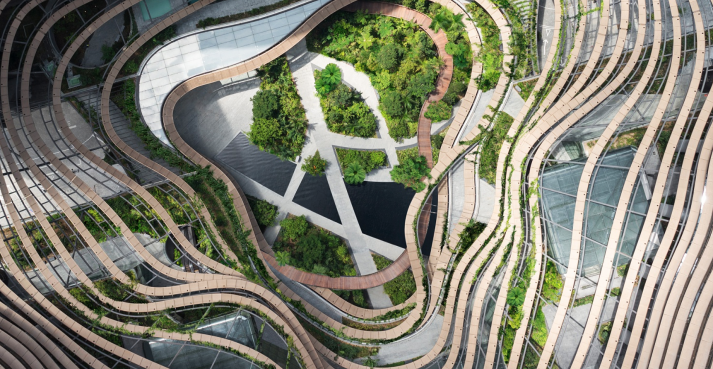Some Known Details About Landscape Design
Table of ContentsThe Of Landscape DesignUnknown Facts About Landscape DesignThe 9-Second Trick For Landscape DesignGet This Report on Landscape DesignAn Unbiased View of Landscape Design
Formal style motif. Credit History: Gail Hansen, UF/IFAS The lawn is an extension of the home where a variety of activities take area. A backyard can usually be split into 3 areas: public (the front lawn), private (the garden), and service (usually the side backyard). The place of activity locations depends mainly on the type of area, the dimension of area needed, the sort of activity, and the wanted distance to various other activities and frameworks.The outdoors wall of your home frequently functions as the very first wall surface or starting point of an exterior room. Inappropriate uses must be divided, and related activities, such as food preparation and dining, must be assembled to make the yard a lot more reliable and enjoyable. When using hardscape to develop spaces, utilize construction product similar to that utilized in your home for connection from your home right into the garden.
Connected areas. Credit History: Gail Hansen, UF/IFAS Making use of similar hardscape features and duplicating plants draws the eye around the garden.
Landscape Design Fundamentals Explained

For emotional convenience plants are used as physical or suggested barriers for privacy and security. Physical obstacles block both the sight and accessibility to an area and consist of fences, walls and plant hedges. Indicated obstacles, usually reduced growing plants, block gain access to yet not the sight (Figure 9). Other features of plants include cleaning up the air, avoiding disintegration and dirt loss, keeping moisture in the soil, and returning raw material to the dirt.
Physical and implied barriers. Credit Rating: Gail Hansen, UF/IFAS For these reasons, the kinds of plants to be made use of (such as trees, hedges, or groundcovers) need to be selected in the onset of planning (Landscape Design). Plant kinds are chosen for their useful capacities to make sure that their future function and needed space can be considered at the very same time

The Greatest Guide To Landscape Design
Each plant mass remains in front of, behind, or following to, one more mass. Number 11. Horizontal plant layers. Credit Rating: Gail Hansen, UF/IFAS Number 12. Vertical plant layers. Landscape Design. Credit Report: Gail Hansen, UF/IFAS Duplicating plants his response within a mass and repeating masses with comparable plants ties the yard together. The private plant qualities have to be thought about to effectively layer and mass plants.
All plant structures start with the main structure plants, the big, primarily evergreen background plants-such as the trees and big shrubs. These plants different or enframe rooms, manage the dimension of the area, and give the beginning factor for selecting the ideal qualities of the 2nd layer, midground plants, for massing and infill.
Important points in the garden must be highlighted by the usage of distinct plants, distinctive frameworks, or yard accessories. Noting limits or entries to spaces can be performed with gates, arbors, and steps, or with using special and colorful plants. The form and/or style theme of the garden will usually assist determine the essential points and exactly how they ought to be highlighted.
Various other important locations in the backyard are centerpieces, which is utilized to visually organize a landscaped area. The sort of prime focus often depends upon the checking out point of view. Different perspectives or viewpoints can reveal various make-ups in the landscape that may need a range of focal factors. Contrasting structure, shape, dimension and color will record and hold the eye.
7 Easy Facts About Landscape Design Shown

Figure 13. Plant types. Credit Rating: Gail Hansen, UF/IFAS After type, appearance is the following leading function of a plant; crude, tool and great structures can be made use of for comparison and emphasis in the landscape. Form and appearance both trump shade in the garden for most of the year. During certain seasons, color will be the most visible attribute of the garden.
The pleasurable aroma of plants, the noise of wind in the trees, the sound and texture of water, and the shades and structures of sculptures, pots and garden furniture all include to the experience of the garden. One detail that is typically overlooked is the result of light on the aesthetic appeals of the plants.

Landscape Design - The Facts
It is necessary to understand the ultimate mature size of plants so they can be click here to read positioned in the right area and spaced correctly when they are installed. Offering plants area to grow is a difficulty due to the fact that the usual mature dimension is usually based on ideal growing conditions and the ecological conditions of a site may cause a plant to enlarge or stay smaller.